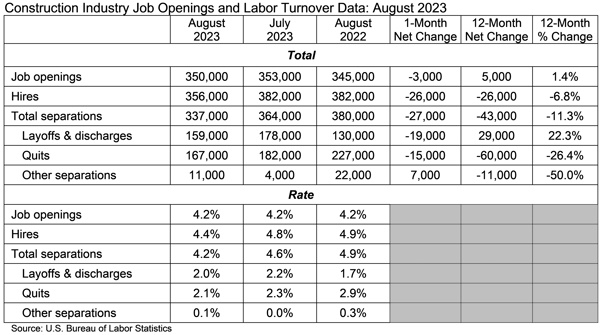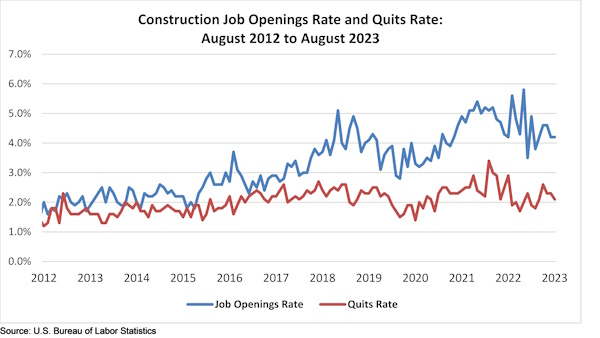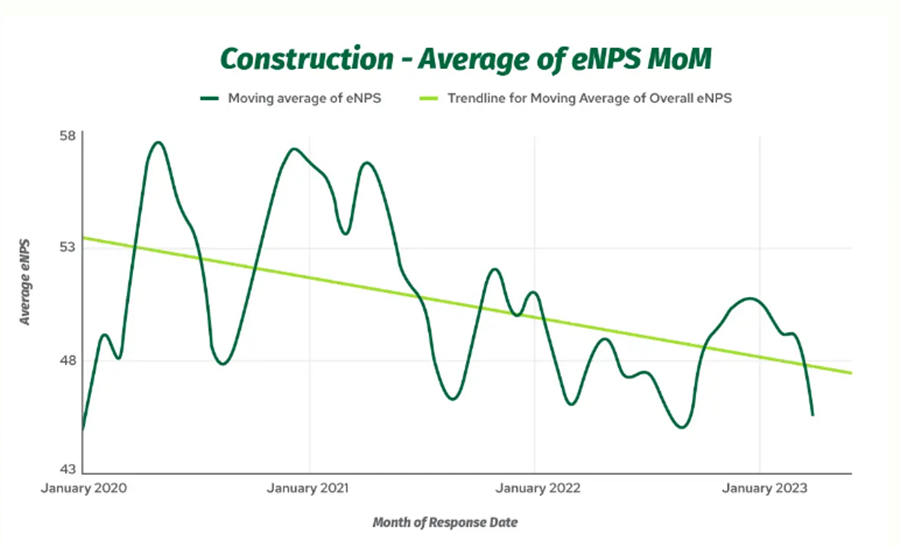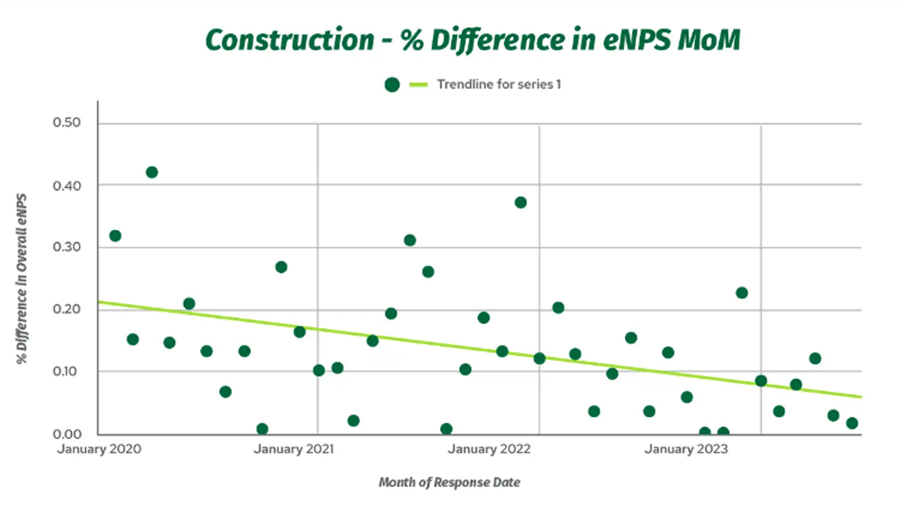ABC Indiana/Kentucky Presents 2023 Excellence in Construction Awards
By Building Excellence | Originally posted on dxc.news
The Associated Builders and Contractors of Indiana/Kentucky (ABC) proudly celebrate the excellence achieved by their member companies each year through the prestigious Excellence in Construction Awards. This annual event not only acknowledges exceptional projects, but also serves as a powerful catalyst for increasing community awareness regarding the outstanding work delivered by Merit Shop contractors and their dedicated teams.
Moreover, the Excellence in Construction competition stands as a testament to the unwavering commitment to excellence within the ABC community. ABC’s Award of Excellence in Construction is a tribute to the collective talent and ingenuity of the entire project team, which includes the contractor, owner, architect, and engineer. These recipients distinguish themselves through their exceptional achievements in innovation, quality, effective communication, and unwavering commitment to safety.
The grand culmination of this journey takes place at ABC’s highly anticipated Excellence in Construction Awards Gala. This prestigious event unfolded amidst the splendid ambiance of the Indiana Roof Ballroom on the evening of September 26, where deserving winners were unveiled, celebrating the pinnacle of construction excellence.
Awards of Excellence
- Project: Industrious at the Stutz
- Award Recipients: Inherent Commercial LLC, Somera Road, DB Partners
- Subcontractors: KTI Mechanical Construction, Robert D. Young Construction, Inc.
- Project: Aspire Additions and Renovations
- Award Recipients: Wurster Construction, Aspire, Artekna
- Subcontractors: Design and Build Electrical, Robert D. Young Inc., Comfort Systems USA, Lee Company Inc., Horning Roofing and Sheet Metal, Caulking Specialists Co.
- Project: The Club at Olde Stone
- Award Recipients: Scott, Murphy & Daniel, Jim Scott, MHK Architecture & Planning
- Subcontractors: Scotty’s Contracting and Stone LLC, D&M Electric, Stewart Richey Construction, Inc.
- Project: Broad Ripple Park Family Center
- Award Recipients: Meyer Najem Construction, Avenue Development, arcDESIGN
- Subcontractors: Berline Construction, Baumgartner & Company Asphalt, Capitol City Fence, ERMCO, Integrity Fire Protection, Denny Excavating, Inc., Engineering Facades/Proclad
- Project: Murfreesboro Medical Center
- Award Recipients: Lee Company, Murfreesboro Medical Center, Rob McKelvey
- Subcontractors: Tennessee Underground, ACT Fire Alarm
- Project: Gainbridge Fieldhouse
- Award Recipients: Gaylor Electric, Gainbridge Fieldhouse, Weddle Bros Construction
- Subcontractors: N/A
- Project: Mission Foods
- Award Recipients: Gaylor Electric, Mission Foods, Lauth Construction
- Subcontractors: N/A
- Project: KCVG Air Ramp Expansion
- Award Recipients: Gaylor Electric, Whiting-Turner Contracting Company, Amazon
- Subcontractors: N/A
- Project: Repair Hydrant Tanks 1-2 and 2-1
- Award Recipients: CMS Corporation, US Air Force, Andersen AFB, Griffith Engineering Services
- Subcontractors: Guam Marine Services, Inc., Industrial Hygiene Professionals, Inc., Kinden Corporation, Valcon Guam, LLC
- Project: Renovate – Expand Hangar 6 Building 18110
- Award Recipients: CMS Corporation, Andersen Air Force Base, Guam
- Subcontractors: Amorient Contracting, Inc., Core Tech International Corp., Environmental Chemical Corporation, Hawaiian Rock Products, J&RS Equipment Company, Landscape Management Systems, Inc., M-80 Systems, Inc., Neudorfer Engineers, VG Gozum Construction, LLC
- (Excellence in Merit Shop Construction)
- Project: Jane Todd Crawford Hospital
- Award Recipients: Green Mechanical Construction, Inc., Jane Todd Crawford Hospital, JRA Architects, Matt Key – Project Manager
- Subcontractors: HMC Services, Minco
- Project: Legacy Living of Florence
- Award Recipients: Wurster Construction, Inc., OMS
- Subcontractors: Ideal Heating and Air Conditioning, Creative Image BMP, Browning Chapman, Capitol City Fence, M.J. Schuetz Insurance Services
- Project: Samara House
- Award Recipients: Brandt Construction, Inc., John E. Christian Memorial Trust (Indiana Landmarks), Harboe Architects, PC
- Subcontractors: Biancofiori Masonry, Inc., Maxwell Electrical Services, Inc., WINCO Construction Company, Inc.
- Project: Benjamin Harrison Presidential Site
- Award Recipients: Brandt Construction, Inc., Benjamin Harrison Presidential Site, RATIO Architects, LLC
- Subcontractors: E.F. Marburger Fine Flooring, Baumgartner & Company Asphalt Services, Capitol City Fence Co., Inc., Executive Elevator, Hillhaus & Mulligan, Inc., Lehman’s Mechanical Contractors, WINCO Construction Company, Inc.
- Project: St. Joseph Children’s Home Renovation
- Award Recipients: Kelley Construction, Inc., St. Joseph Children’s Home, Stengel-Hill Architecture
- Subcontractors: Dine Company, Inc., The Restaurant Store, Flynn Brothers Contracting, Inc., KV Flooring
- Project: United Animal Health Addition Replacement
- Award Recipients: Steinberger Construction, United Animal Health, KJG Architecture, Inc.
- Subcontractors: N/A
- Project: Aluminum Insights
- Award Recipients: Ancon Construction Co., Inc., Aluminum Insights
- Subcontractors: Dilling Group, Inc., Hill Excavation, Inc., LeMaster Steel Erectors, Middlebury Electric, Inc., Niblock Excavating, Inc.
- Project: Louisville Renaissance Zone Corporation Warehouse
- Award Recipients: Kelley Construction, Inc., Louisville Renaissance Zone Corporation, Andrew Churchill Architect
- Subcontractors: Advance Ready-Mix Concrete, Inc., BJB, Inc., First Choice Commercial Services, Padgett, Inc., Wallace Company, Inc.
- (Excellence in Merit Shop Construction)
- Project: Clemens Hatfield North
- Award Recipients: Gray, Clemens Food Group, Gray AE, PSC
- Subcontractors: N/A
- Project: Origin Park Canoe Launches
- Award Recipients: MAC Construction, River Heritage Conservancy, Qk4, Inc.
- Subcontractors: LA Surety Solution, LLC, McGridd Insurance Services
- Project: Marian University – The Alumni House at Allison Mansion
- Award Recipients: Brandt Construction, Inc., Marian University, Schmidt Associates
- Subcontractors: E.F. Marburger Fine Flooring, Executive Elevator, Hillhouse & Mulligan, Inc.
- Project: Carmel Clay Community Building
- Award Recipients: Myers Construction Management, Inc., Carmel Clay Community Bldg., DLZ
- Subcontractors: M.J. Schuetz Insurance Services, Artisan Masonry, Inc., Ritchie Finishes
- Project: The Orthopedic Center
- Award Recipients: Lee Company, The Orthopedic Center, Champan Sissons
- Subcontractors: N/A
- Project: Nashville Record Pressing
- Award Recipients: Lee Company, Nashville Record Pressing, Crossroads Architecture
- Subcontractors: Insulating Services, Inc., Ferguson Enterprises
- Project: Granger Dental and Orthodontics
- Award Recipients: Ancon Construction Co., Inc., Our Best Life Companies
- Subcontractors: Pierce Electric, Hill Excavation, Fuerbringer Landscaping and Design
- Project: Goodwill Academy
- Award Recipients: Ancon Construction Co., Inc., Goodwill Industries of Michiana, Inc.
- Subcontractors: Gaylor Electric, Inc.
- Project: Repair Kittyhawk Dorms, Wright-Patterson AFB, OH
- Award Recipients: CMS Corporation, US Air Force, Wright-Patterson AFB, Burgess & Niple
- Subcontractors: Allied Fence Builders, Calvin Electric LLC, R.C. Hemm Glass Shops, Inc., Satellite Shelters, Inc., Tradesman International, Vandalia Rental, Waste Management
- Project: Hardwood Forest Drive Slide Correction – Design/Build
- Award Recipients: MAC Construction, Louisville Jefferson County Metro Government, Qk4, Inc., Atlas, Cornerstone Engineering, Inc.
- Subcontractors: Saf-Ti-Co, Inc., LA Surety Solution LLC, McGriff Insurance Services
- Project: Miller Transportation
- Award Recipients: T&W Corporation, Gary Miller, Keith Gary
- Subcontractors: Globe Asphalt Paving Co.
- Project: Inovateus Solar DePue
- Award Recipients: Gaylor Electric, Inovateus Solar LLC
- Subcontractors: N/A
- Project: Jefferson CSO Storage
- Award Recipients: MAC Construction, Jeffersonville Sewer Board, Jacobi, Toombs, and Lanz, Inc.
- Subcontractors: Allterrain Paving and Construction, LA Surety Solution, LLC, McGriff Insurance Services
- Project: Camp Run Parkway Extension
- Award Recipients: MAC Construction, Town of Sellersburg, Jacobi, Toombs, and Lanz, Inc.
- Subcontractors: LA Surety Solution, LLC, McGriff Insurance Services
Awards of Merit
- Project: Wag’n Tails Corporate Office
- Award Recipients: Ancon Construction Co., Inc., Wag’n Tails
- Subcontractors: Fuerbringer Landscaping & Design, Pierce Electric, KCC Manufacturing, Koorsen Fire
- Project: Redline Flats
- Award Recipients: Inherent Commercial LLC, Midtown Development Partners II LLC, Studio M Architecture & Planning
- Subcontractors: KTI Mechanical Constructors, Caulking Specialists Company, Engineered Facades, McComb Window & Door Co. Inc., Robert D. Young Construction, Inc., Skyline Roofing & Sheet Metal Co., Inc.
- Project: 500W
- Award Recipients: Miranda Construction LLC, Somera Road, Earl Swensson Associates
- Subcontractors: KV Flooring, Palmer Roofing & Sheet Metal, Bailey Safety
- Project: Eight Eleven Group Corporate HQ
- Award Recipients: Meyer Najem Construction, Eight Eleven Group, Studio M
- Subcontractors: Geiger & Peters, Inc., Acoustics Plus, Fredericks, Inc., Ryan Fire Protection, Ferrer Mechanical Services, Design & Build Electric, KTI Mechanical Constructors, Kenny Glass
- Project: Clubhouse Holliday Farms
- Award Recipients: Gaylor Electric, Shiel Sexton
- Subcontractors: N/A
- Project: Sealy Tempur-Pedic
- Award Recipients: Gaylor Electric, Shiel Sexton, Sealy Corporation
- Subcontractors: N/A
- Project: Clean and Repair Tanks at AUTEC, Bahamas
- Award Recipients: CMS Corporation, Specialty Tank Services
- Subcontractors: Customized Mechanical Solutions, LLC
- Project: The Belmont Health and Rehabilitation
- Award Recipients: Brandt Construction Inc., Magnolia Health Systems, AET, Inc.
- Subcontractors: E.F. Marburger Fine Flooring, Hillhouse & Mulligan, Inc., Maxwell Electrical Services, Inc., McComb Window & Door Co., Inc., P.I.P.E., Inc.
- Project: St. Christopher Catholic Parish Additions & Renovations
- Award Recipients: Wurster Construction, Inc., krM Architecture, St. Christopher Parish
- Subcontractors: Mechanical Contracting Services, Global Asphalt Paving Co., Design & Build Electric, E.F. Marburger Fine Flooring, Capitol City Fencing Co., Architectural Walls
- Project: Milhaus Corporation HQ
- Award Recipients: Mechanical Contracting Services, Inc., Kort Builders, Inc., Milhaus
- Subcontractors: N/A
- Project: BG2
- Award Recipients: Lee Company, BG
- Subcontractors: N/A
- Project: Corporate Office Renovation
- Award Recipients: T&W Corporation, Melinda McGee, U.S. Architects
- Subcontractors: Clawson Communications, Ellis Mechanical, IWP Inc., Globe Asphalt and Paving Co., Little Construction Co. Inc., Capitol City Fence














